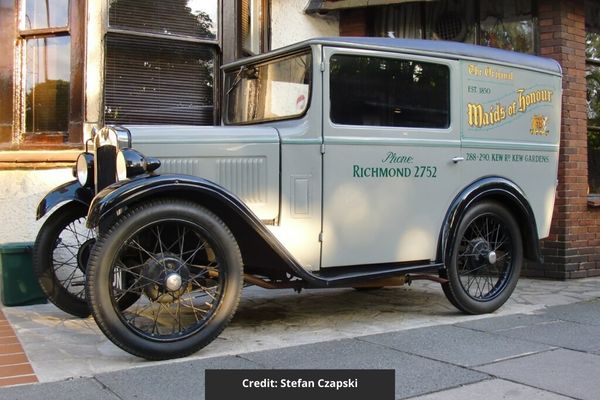Is the Austin 7 the perfect pre-war classic?
‘It’s the journey, not the destination’ is something you hear everywhere from birthday cards to self-help books, but it applies equally well to pre-war classics like the Austin Seven. The baby Austin is never going to win any performance contests, yet it will paste a smile all over your face on every trip, which makes it just about the best introduction to pre-war classics you could hope for.
The tiny Austin is the car that got the masses into motoring in the UK, just as the Ford Model T did in the US, with almost 300,000 of all types made between 1923 and 1939. As a result, there are plenty of Sevens to choose from when you decide to take the plunge.
There’s also a huge variety of models to pick from within the Austin Seven range, from early vintage Chummy open-tops to the later Ruby saloons. In between these two bookends of the Seven’s life, you’ll find everything from simple saloons to vans, roadsters and cabriolets, and some surprisingly quick sports models. There were even single-seat race cars to take on the best at tracks like Brooklands and Montlhéry in France. Simply put, there was a Seven for everyone and every budget.
This still holds true today and you can find presentable runners that are ready to enjoy from £5000. Smarter Ruby saloons will begin at £7500, while a good Chummy will go from £12,000. For the two-seat models like the Super Sports and Nippy, reckon on spending £15,000 for a well-sorted example and a good bit more for an original Ulster in fine fettle.
Compare those values to many other pre-war cars and the Austin is just as much a bargain as it was when new. Another reason this car is the ideal route to feel your way into pre-war classic car ownership is the huge spares and restoration network that exists for the Seven. There are plenty of specialists who can help with maintenance and servicing, and you can find everything you need to keep a Seven on the road or complete a rebuild. Insurance is also affordable, and that makes the Austin a much more appealing prospect than some of the less common cars of the period that come up for sale, though many find the Seven is a gateway to owning more unusual vintage cars once the bug has bitten.

Keeping an Austin Seven on the road is simple, then, and that means you can use it without fear of the car languishing for months if something does need replacing. In turn, this allows you to enjoy a raft of club and classic events in a Seven. With several clubs dedicated to the Austin, you’ll never be far from another owner to chat with and ask advice from, and events vary from relaxed pub meets all the way to circuit racing and classic trials. This latter option is very well suited to the lightweight Seven and its narrow tyres that seem to find traction on even the slipperiest ascents, and you can take friends along to enjoy the day’s competitive driving too.
If all of that has piqued your interest, what’s it like to drive an Austin Seven, then? If you want an early Seven, it will take some getting used to even if you have owned a few post-war classics. The good news is the foot pedals are all where they should be – clutch on the left, brake in the middle, and throttle on the right. However, the starter is a button on the floor and you’ll need to juggle the choke, hand throttle, and the advance/retard lever to get the car started. You’ll also need to remember these cars have a three-speed manual gearbox that demands double-declutching for every change and the shift pattern is the opposite of modern cars, so first is to the right and back.
Later Sevens with the four-speed manual gearbox have the same H-pattern layout as more modern classics, so they are more intuitive to drive right away. However, all Sevens are very low-geared, so you’ll be shifting up to top quickly. Luckily, the little 747cc engine has a plucky nature and pulls well. Early cars made do with just 10bhp, so steeper hills can be slow going, while the later Ruby came with a giddy 17bhp. In all but the final Sevens made from 1936 to the end of production in 1939, the clutch is very sudden in its take-up, which is another quirk of the car to get used to.

On the move, 35mph is a comfortable cruise in any Seven unless it’s a sporty number or one of the many specials that have been tuned for greater speed. Don’t discount an Austin Seven special, most of which are simple two-seat sports cars in style. Many are well-built and have been developed over the years into fine sporting cars. Just make sure to check the quality of the workmanship and ask around among owners about the car before committing to a deal.
Handling of most Sevens is sufficient to potter along at an easy pace, though you will find the steering has a bit of play in the straight-ahead position. The brakes also need some thought as the pedal only works on one set of wheels and the handbrake on the other. Balancing the two methods of braking takes a little familiarity but a properly maintained Seven will pull up as well as any of its contemporaries – just plan in advance as you approach junctions.
This might sound like a lot to take in, but driving an Austin Seven is easy to learn and you’ll quickly revel in making a seamless gear change and hustling it along country lanes. It’s an all-encompassing experience that means you’ll soon forget about the destination because the journey is much more fun.
Are you the proud owner of an Austin Seven? Let us know whether you think there’s a better way of kicking off pre-war classic ownership…

No the Austin 7 (not the Big 7} is too fragile for todays conditions. The one car in that range I would choose is the Standard 8/9 range which are indestructable, the engine is unburstable and not unreliable. I have a 1937 Flying 9 which I can take anywhere, anytime.
Dick, 05/09/2023
COMMENT